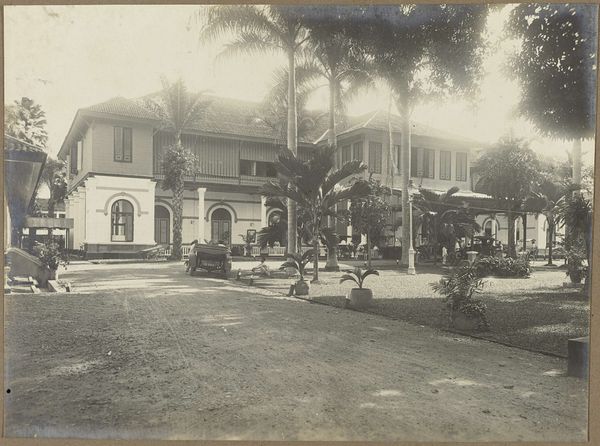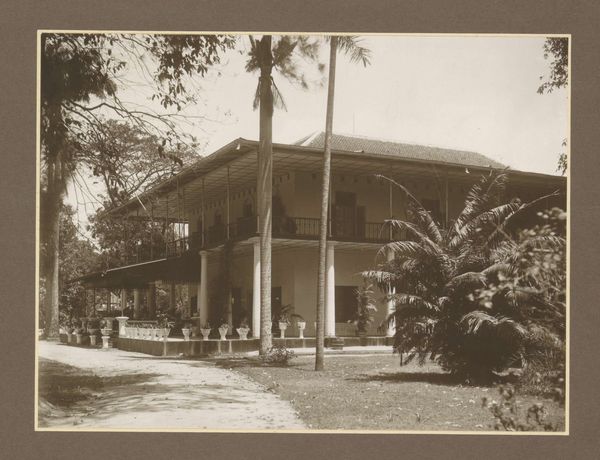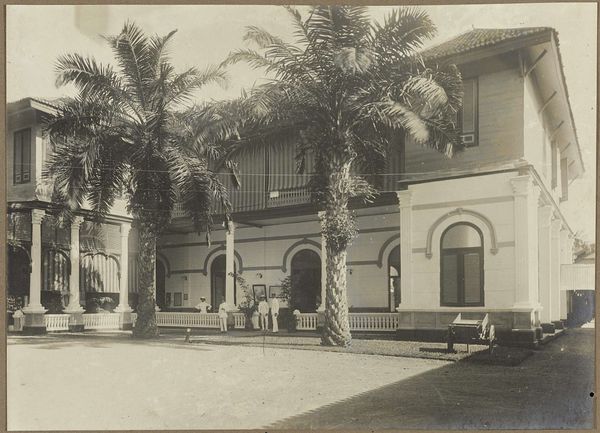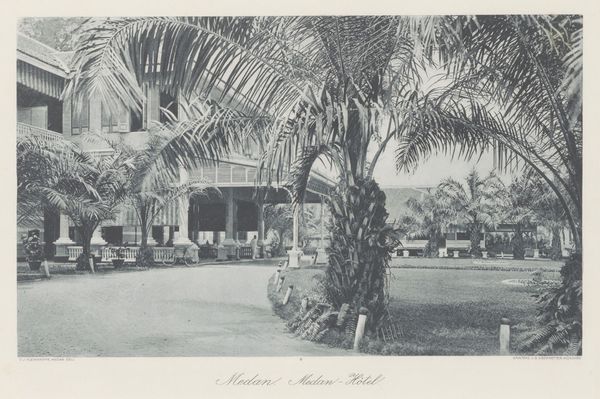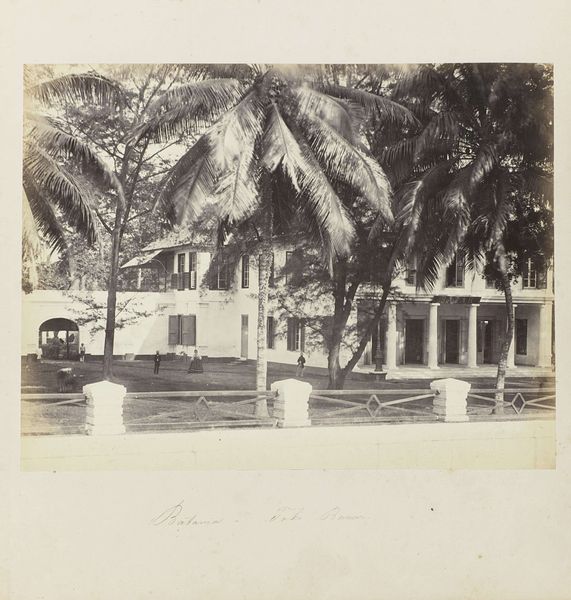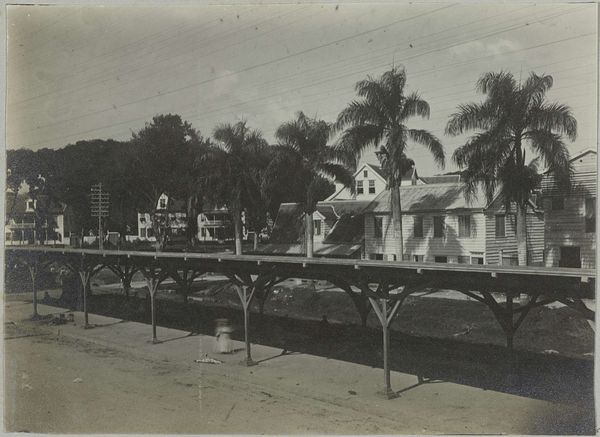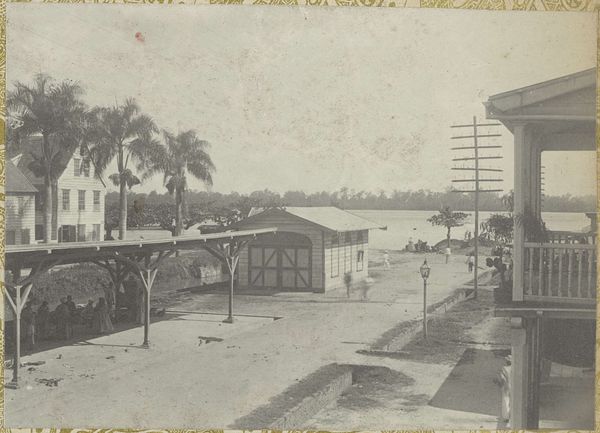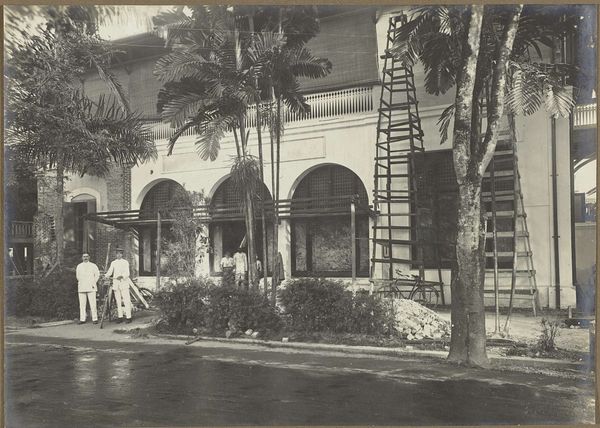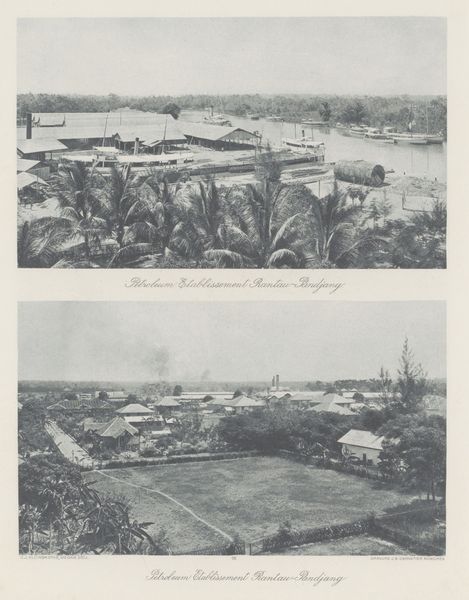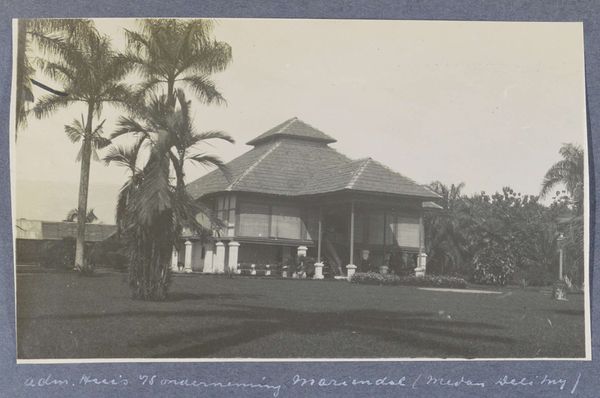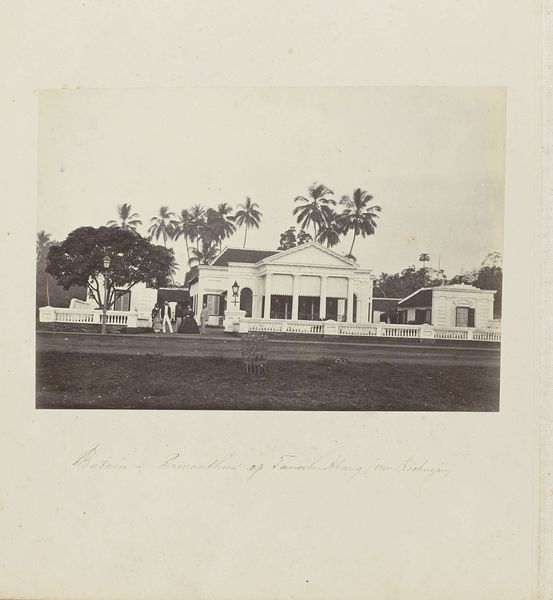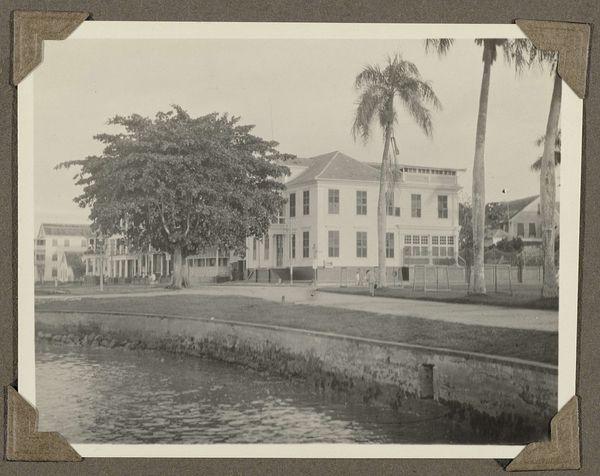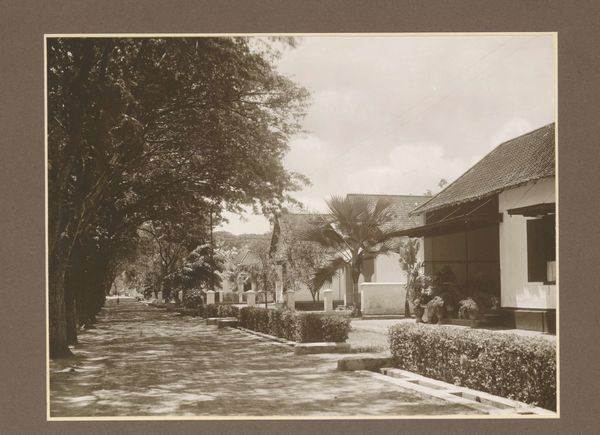
Witte Sociëteit (boven) en restaurant De Boer (onder) in Medan before 1898
0:00
0:00
carljkleingrothe
Rijksmuseum
photography, albumen-print, architecture
#
photography
#
postcolonial-art
#
orientalism
#
cityscape
#
albumen-print
#
architecture
Dimensions: height 132 mm, width 218 mm, height 125 mm, width 219 mm
Copyright: Rijks Museum: Open Domain
Editor: Here we have a photographic print from before 1898, showing the ‘Witte Sociëteit’ and ‘Restaurant De Boer’ in Medan, attributed to Carl J. Kleingrothe. The architecture, stark white against the tropical setting, is striking. What do you make of its composition and materials? Curator: Well, this albumen print, a product of specific chemical processes and labor, is crucial to consider. The paper, the silver salts, and the very act of photography – these materials themselves communicate a certain colonial reality. What kind of labor was used to construct the buildings? Editor: So, the photograph becomes less about just the image, and more about... who made it, with what, and why? Curator: Precisely. Consider also how this photograph participates in circulating a specific vision of colonial spaces for consumption back "home." Who was meant to view this image, and how did it solidify their ideas about Medan, about the "Orient?" It almost transforms the city into a manufactured commodity. What’s captured versus what isn’t is key. Editor: I see what you mean. It feels less like a documentary image and more like… marketing? The specific materials involved support the whole system of colonization. Curator: Yes! How does the photographic process itself – the darkroom labor, the distribution – reinforce power structures through production? We have to investigate these tangible connections. Editor: So it goes beyond the simple binary of subject and photographer, instead pointing to the much wider dynamics of empire and how those get concretized materially. Thanks; that definitely shifts my perception of the piece!
Comments
No comments
Be the first to comment and join the conversation on the ultimate creative platform.
